Last updated: August 23, 2024
Article
Archeology and When War Came to the Hare House at the Eastern Front (An Informal Learning Activity)
When the Civil War came to Petersburg, it affected and displaced the people living there, including the people living at the Hare House. The Eastern Front of Petersburg National Battlefield, has many archeological sites holding these stories. Today, Petersburg National Battlefield helps the National Park Service tell the story of over 12,000 years of history: from the first people to explore the area, to the establishment of plantations, through the Civil War.
About This Activity
In this informal learning activity, we will explore ways that the archeological artifacts can provide insight about people's lives in the past.
Objectives: 1) Explore how archeology reveals information about peoples living at the Hare House and 2) Study artifacts and complete activities to deepen your understanding.
Audience: This informal learning activity is developed primarily for 4th-grade audiences but can be scaled to lower or higher grade levels. It provides a starting point that you can adapt to suit the needs of your learners.
Skills and Standards: Each section asks learners to draw on skills such as reading comprehension, independent or group work, writing, and using evidence to support conclusions. The activities provide opportunities to meet several Common Core State Standards, Virginia State Standards, and National Council for the Social Studies Curriculum Standards Themes. The content can be adapted to address Virginia State Standards for grades 4, 5, 8, and 11.
For more information, visit the park’s website. Also try the other two activities in this series: Archeology and the Indigenous Peoples at Grant's Headquarters at City Point and Archeology at the Eppes Family Plantation at Grant’s Headquarters at City Point.
War Comes to the Hare House
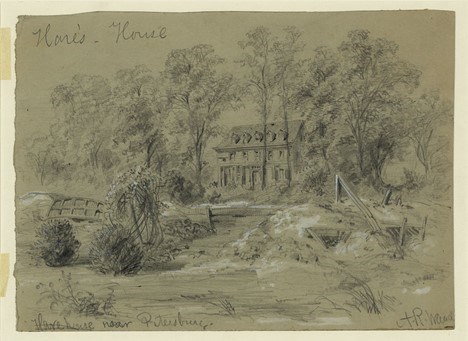
In his haste to escape, Hare left everything behind: furniture, ornaments, rugs, clothing, dining ware, and food. First-hand accounts by soldiers stationed along the offensive line at the Eastern Front detail some of the things they found and their treatment of the house and outbuildings.
In late July, the house collapsed, and Hare’s things pancaked into the cellar. The first archeologists to investigate the Hare House site called it a “time capsule,” because the site and its contents described a very specific point in history.
Look Closer
Archeologists and historians know the names, dates, and places for the Hare House from first-hand accounts and government records. You can explore these records yourself.
Copy any information you find about the Hare House. Make a list of the things the soldiers used or touched.
- Search the official records of the Union and Confederate armies for details about Hare’s property. Use keywords like “Petersburg,” “O.P. Hare,” or “Hare.”
- Read Capt. C.A. Stevens’ account of Hare’s Farm on June 18-20, 1864.
- Also explore:
- Edwin B. Houghton, The Campaigns of the Seventeenth Maine
- Alfred Seelye Roe, Charles Nutt, History of the First Regiment of Heavy Artillery, Massachusetts Volunteers, formerly the Fourteenth Regiment of Infantry, 1861-1865, page 288
What information do these records provide? How might the information in these accounts help archeologists to anticipate what they will find at the Hare House site and how they will interpret the evidence?
Artifact Studies
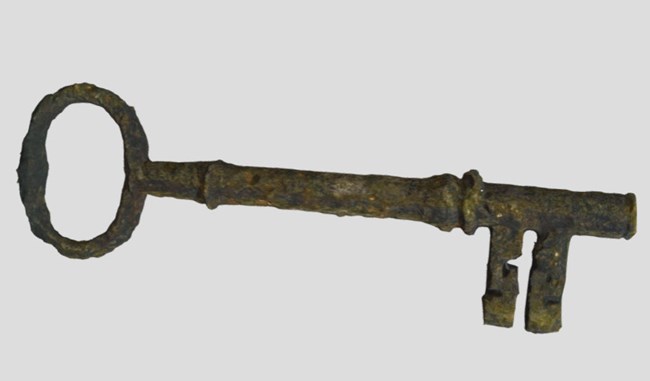
View the key in 3d.
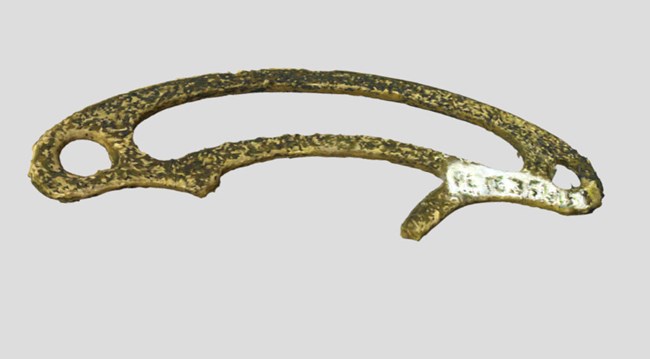
Some of these things are of interest to archeologists learning about him and the people in his household. One item left behind by Hare was the bell pull for the front door.
View the bell pull in 3d.
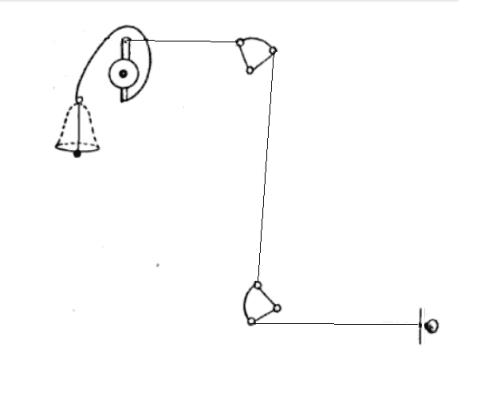
We also know that it was part of a bigger mechanical system, like this:
The bell pull fragment from Hare House looked a lot like one of the pieces in this system. Which was it? What did it do?
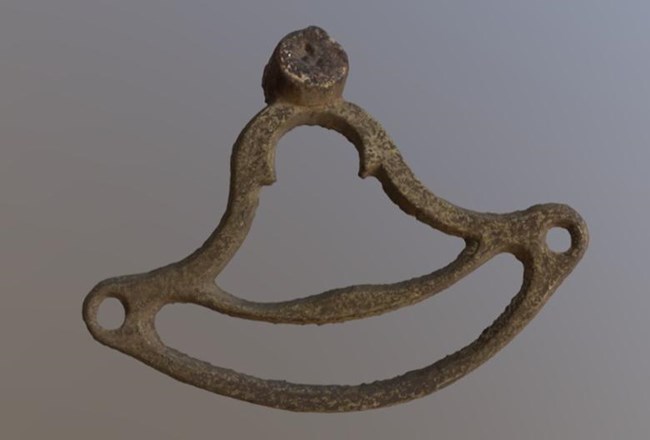
Where do the shapes overlap? Who do you think pulled the bell pull? Who responded when the bell rang?
View the bell pull fragment in 3d.
Dig Deeper
Imagine that you must leave your home immediately. What would you take with you?Look around the room. Identify ten things that you wouldn’t ever think to take.
How would future archeologists know what they were and what they were used for, if you weren’t there to explain?
Help Us
The key and and bell pulley have something in common – they’re made of metal. Metal is preserved pretty well in the soils at Petersburg National Battlefield. That’s good news, because archeological evidence provides an additional perspective to other historical sources on the events at the battlefields. But metal is also a target for people who illegally use a metal detector or dig up objects on federal land. Likewise, visitors may not dig for or take stone tools or other artifacts from the park.You can help the National Park Service preserve and protect the history of Petersburg National Battlefield.The Archaeological Resources Protection Act is the federal law that protects archeological sites and artifacts on federal lands, like Petersburg National Battlefield. Learn all about it at Learn the Law: The Archaeological Resources Protection Act.
Wondering what to do if you find an artifact during your visit to Petersburg? Here's What To Do If You Find an Artifact.
